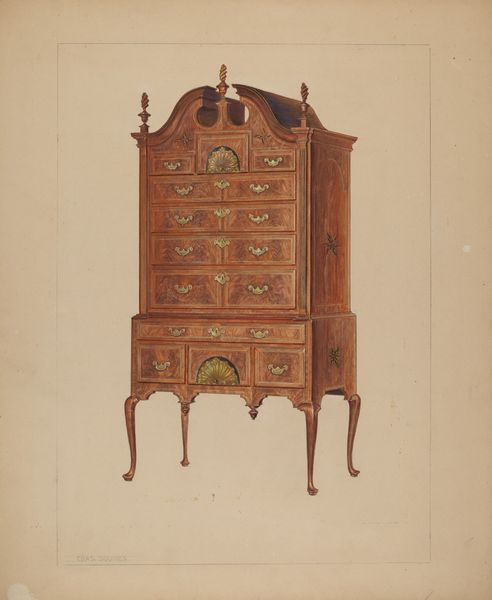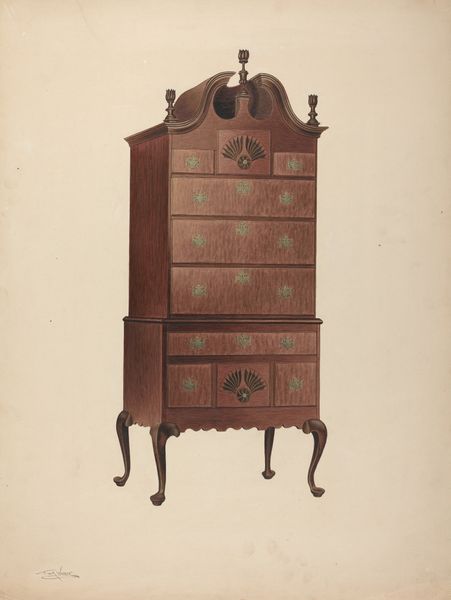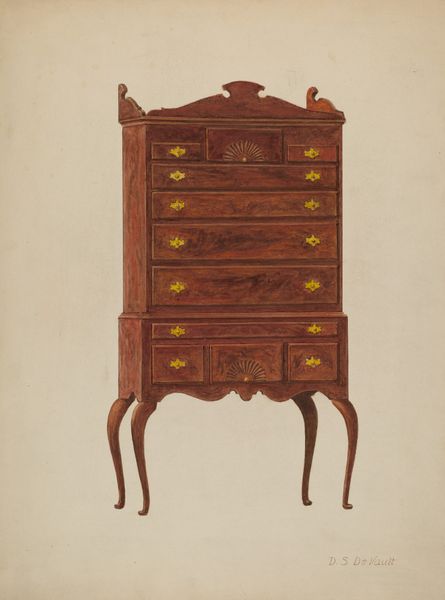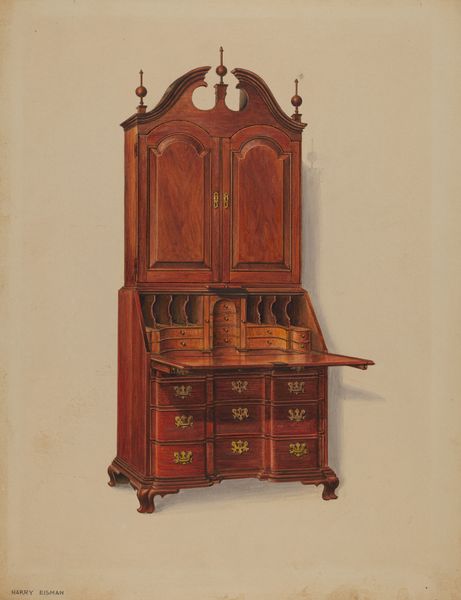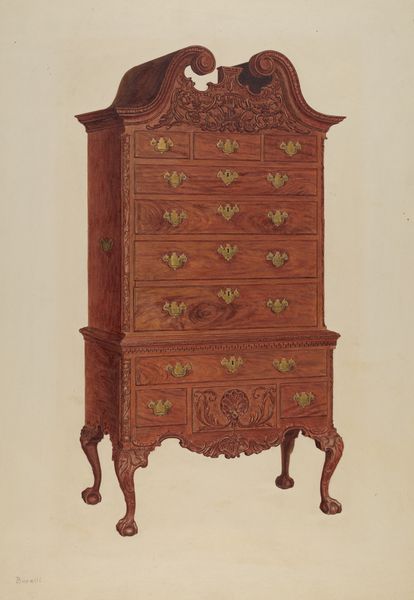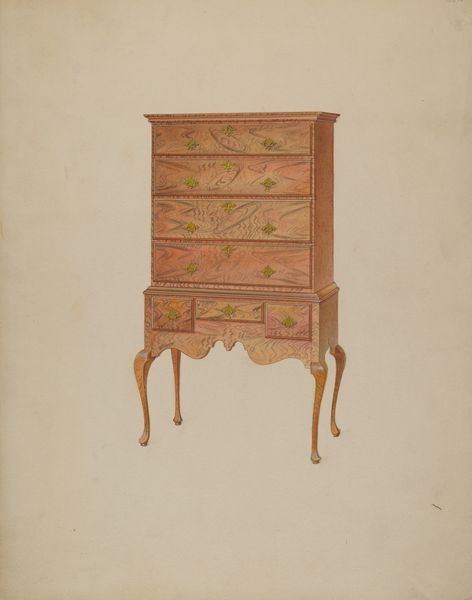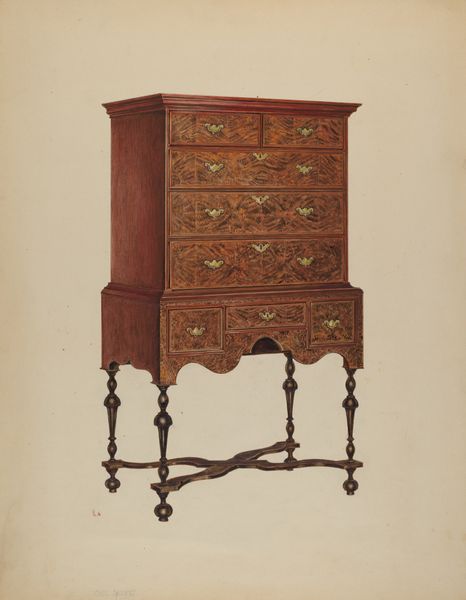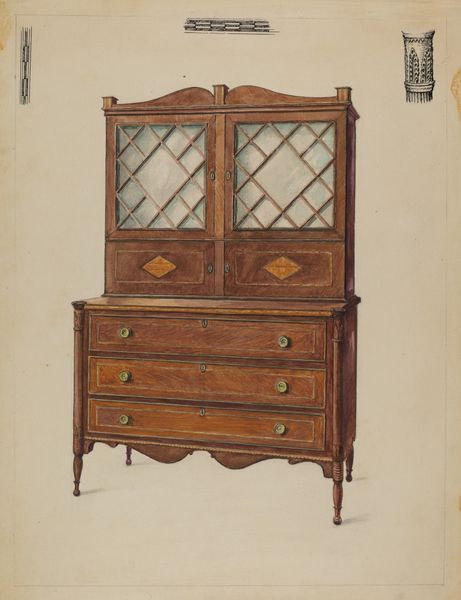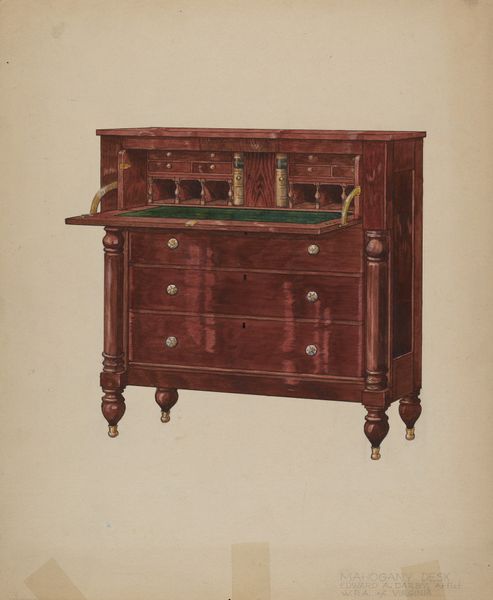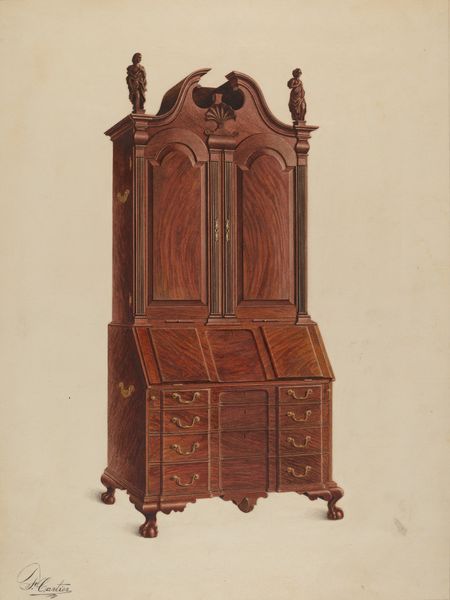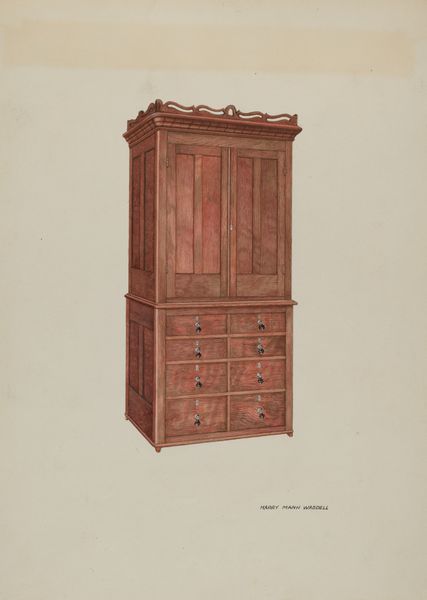
drawing, watercolor
#
drawing
#
charcoal drawing
#
watercolor
#
folk-art
#
geometric
#
decorative-art
#
watercolor
Dimensions: overall: 37 x 28 cm (14 9/16 x 11 in.) Original IAD Object: 89 1/2"high; 43 3/4"wide; 22"deep.
Copyright: National Gallery of Art: CC0 1.0
Curator: The artwork before us, entitled "Highboy," was created in 1936 by Francis Borelli. It is a drawing composed of watercolor and charcoal. Editor: My immediate impression is of meticulous craftsmanship. There’s a sense of order and, dare I say, a quiet opulence emanating from this rendered piece of furniture. Curator: Indeed. Borelli's rendering emphasizes geometric precision and the clean lines typical of the decorative arts. Consider the careful arrangement of the drawers and the recurring motif of radial forms. What might this rigid structure convey? Editor: I'm drawn to the depiction itself, more so than what it shows: it’s a drawing *of* furniture. The artistic labor inherent in transforming a three-dimensional object into a two-dimensional plane strikes me. How much does its purpose to memorialize artisanal work affect our reading? Curator: Intriguing. I am struck by the interplay of light and shadow that shapes the overall composition. See how Borelli employs delicate washes of watercolor to create subtle tonal gradations, imbuing the highboy with a sense of depth and volume. Editor: Observe how the choice of medium enhances its essence. Watercolour suggests fragility. Charcoal gives way to weight, emphasizing material. These combine, subtly underlining the cabinet's constructed nature as both a sturdy container *and* decorative art object. It draws attention to this labor – and, perhaps, class. Curator: Do you suggest that Borelli critiques or simply documents the class associated with objects of comfort and material abundance? Editor: Possibly both? I consider also that the act of documentation via such rendering inherently implies valuation of not just design but manufacturing – that labor made visible by artistry itself! Curator: A complex tapestry of artistry and social observation indeed! "Highboy", viewed through a material lens, provides valuable insights beyond its overt aesthetic appeal. Editor: Precisely! And, as we conclude, this juxtaposition illustrates art’s continuous relevance in prompting dialogues between visual form, meaning, making, and material conditions.
Comments
No comments
Be the first to comment and join the conversation on the ultimate creative platform.
